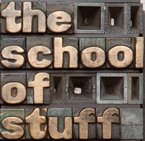This website uses cookies so that we can provide you with the best user experience possible. Cookie information is stored in your browser and performs functions such as recognising you when you return to our website and helping our team to understand which sections of the website you find most interesting and useful.
Strictly Necessary Cookies
Strictly Necessary Cookies are enabled at all times, so that the website functions correctly and that your preferences for cookie settings can be saved.
Statistical Cookies
This website uses Google Analytics to collect anonymous information such as the number of visitors to the site, and the most popular pages. We study and profile this data to help us improve our products and performance.
Please enable Strictly Necessary Cookies first so that we can save your preferences!
Marketing Cookies
These cookies help us decide which products, services and offers may be relevant for you. We may use this data to tailor the ads you see on our own and other websites.
Please enable Strictly Necessary Cookies first so that we can save your preferences!
Cookie Policy
More information about our Privacy Policy
